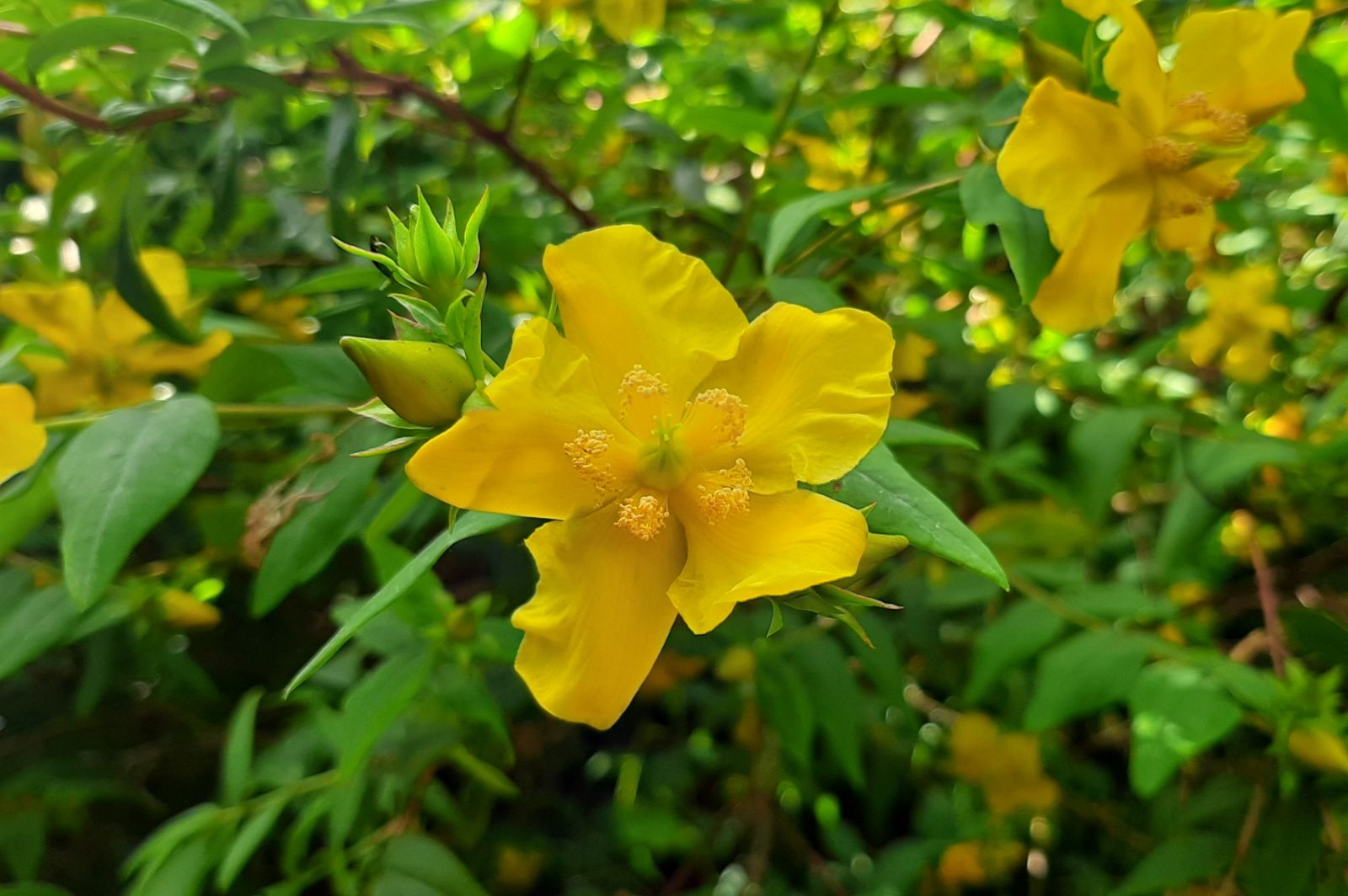Hypericum choisianum
Credits
Article from Bean's Trees and Shrubs Hardy in the British Isles
Recommended citation
'Hypericum choisianum' from the website Trees and Shrubs Online (treesandshrubsonline.
Genus
Synonyms
- H. hookerianum var. leschenaultii sens. Dyer in Fl. Brit. Ind., not H. leschenaultii Choisy
Other taxa in genus
- Hypericum acmosepalum
- Hypericum addingtonii
- Hypericum aegypticum
- Hypericum androsaemum
- Hypericum augustinii
- Hypericum balearicum
- Hypericum bellum
- Hypericum buckleyi
- Hypericum calycinum
- Hypericum cerastoides
- Hypericum chinense
- Hypericum cordifolium
- Hypericum coris
- Hypericum × cyathiflorum
- Hypericum densiflorum
- Hypericum 'Eastleigh Gold'
- Hypericum empetrifolium
- Hypericum ericoides
- Hypericum forrestii
- Hypericum frondosum
- Hypericum galioides
- Hypericum grandifolium
- Hypericum 'Hidcote'
- Hypericum hircinum
- Hypericum hookeranum
- Hypericum hypericoides
- Hypericum × inodorum
- Hypericum kalmianum
- Hypericum kouytchense
- Hypericum leschenaultii
- Hypericum lobbii
- Hypericum monogynum
- Hypericum × moseranum
- Hypericum × moserianum
- Hypericum nudiflorum
- Hypericum olympicum
- Hypericum patulum
- Hypericum prolificum
- Hypericum reptans
- Hypericum revolutum
- Hypericum stellatum
- Hypericum subsessile
- Hypericum wilsonii
- Hypericum xylosteifolium
A shrub to 6 ft or slightly more high; stems four-lined and flattened when young, becoming terete. Leaves shortly stalked, 1 to 31⁄2 in. long, 3⁄8 to 15⁄8 in. wide, usually triangular-lanceolate, broad-cuneate to rounded or slightly cordate at the base, not glaucous beneath. Inflorescence one- to seven-flowered. Flowers golden yellow, 15⁄8 to 23⁄4 in. wide, shallowly to deeply cup-shaped; buds ovoid. Sepals spreading to recurved in bud and fruit, elliptic, usually acute to apiculate at the apex. Petals broadly obovate to rounded; lateral apiculus rounded. Stamens one-third to two fifths as long as the petals. Ovary and capsule broad-ovoid. Styles one-third to three-quarters as long as the ovary.
A native of the Himalaya, thence through northern Burma to Yunnan. The type was collected in Kumaon and catalogued as H. choisianum, but the name was first validated by Dr Robson in 1973. It has been confused with H. hookerianum, in which the leaves are glaucous beneath, the sepals erect and the stamens relatively shorter (one-quarter to one-third as long as the petals). It is in cultivation from seeds collected in Nepal (B.L. & M. 147 (1971) and Schilling 2242 (1977)), and possibly from other sources also.
† H. maclarenii.N Robson – This is near to H. choisianum, but with narrower petals, giving a star-shaped flower, longer stamens and leaves glaucous beneath. A native of western Szechwan, introduced by Roy Lancaster from seed collected in 1981 (L.863).

